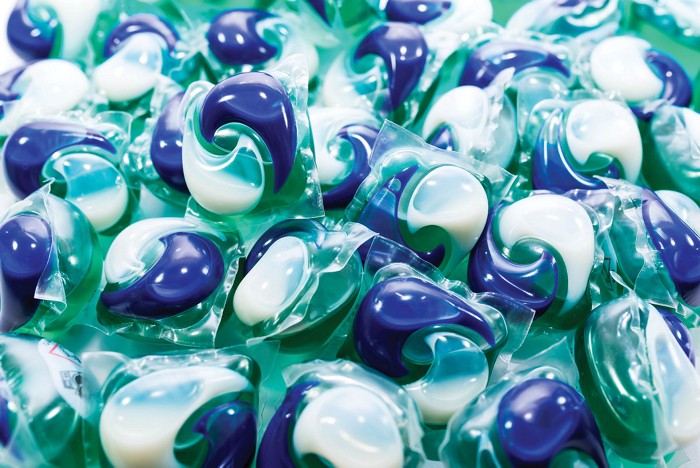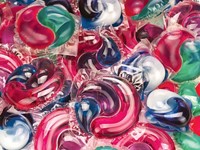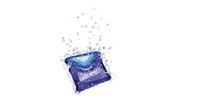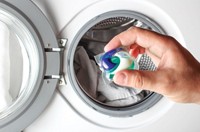Advertisement
Grab your lab coat. Let's get started
Welcome!
Welcome!
Create an account below to get 6 C&EN articles per month, receive newsletters and more - all free.
It seems this is your first time logging in online. Please enter the following information to continue.
As an ACS member you automatically get access to this site. All we need is few more details to create your reading experience.
Not you? Sign in with a different account.
Not you? Sign in with a different account.
ERROR 1
ERROR 1
ERROR 2
ERROR 2
ERROR 2
ERROR 2
ERROR 2
Password and Confirm password must match.
If you have an ACS member number, please enter it here so we can link this account to your membership. (optional)
ERROR 2
ACS values your privacy. By submitting your information, you are gaining access to C&EN and subscribing to our weekly newsletter. We use the information you provide to make your reading experience better, and we will never sell your data to third party members.
Consumer Products
What’s that Stuff
What makes dissolving detergent pods hold together, and are they safe for the environment?
Polyvinyl alcohol provides the pouch for the popular laundry and dishwashing pods
by Craig Bettenhausen
July 29, 2022

They’re cute, they’re colorful, and they’re gobbling up market share in both home and personal cleaning.
Pods packed with detergent for laundry machines and dishwashers have been around for more than a decade, but in the past few years they’ve gone from niche product to mainstream. Beyond laundry and dishes, pods are starting to take root in personal care items such as shampoo. They are even rolling out as concentrated refills for products like window cleaner. But what are pods, and are they safe for the environment?

Source: Polm. Adv. Technol. 2000, 11, 873
In 2012, Procter & Gamble launched the first liquid detergent pods under the brand name Tide Pods in the US. By 2015, detergent pods had claimed 15% of the domestic laundry and dishwasher market, according to Ben Stern, CEO of Nohbo, a maker of personal care pods. That share is now about 25%.
In basically all the current applications, pods consist of a concentrated blend of surfactants and other cleaning ingredients encapsulated in a water-soluble film.
The cleaning industry is shifting toward concentrates because they contain less water than conventional products do. This cuts down on shipping costs and emissions, and decreases the amount of plastic packaging that later becomes waste. But the handling of potent chemical cocktails at home is potentially unsafe and definitely a legal risk for product makers. Single-dose pods provide a fix for that problem.
But people like pods, as well. Many consumers cite convenience as a central selling point, according to Yash Parulekar, a sustainability and regulatory affairs executive at MonoSol, a leading maker of water-soluble polymer films.
The key to pods is the thin encapsulating film. That film needs to stay intact while holding chemically active liquids and solids, but dissolve quickly and completely in water—even cold water. The material offering those properties that most firms have landed on is a polymer called polyvinyl alcohol (PVA).
In its simplest form, PVA is a straight, saturated carbon chain with an alcohol group on every other carbon. It is made by hydrolyzing acetate groups in polyvinyl acetate into alcohol groups. By leaving a few acetates in place, PVA makers hit the sweet spot for solubility. Parulekar says detergent pod films that are 85–90% hydrolyzed are fully soluble in cold water. Pod films are usually a blend of polymer chain lengths, from 600 to 2,400 monomers, with the exact composition depending on the strength and solubility needs for a specific pod.
In addition to PVA, pod films contain minority ingredients to help them fend off the liquids inside or to impart other useful properties—like tasting terrible. Parulekar says MonoSol uses Bitrex, a brand of the chemical denatonium, to prevent pod ingestion. This quaternary ammonium compound, a cation usually paired with a benzoate or saccharide anion, is billed as the most bitter known substance.
Despite its terrible taste, which can repel humans at concentrations as low as 0.01 ppm, denatonium is harmless. The chemical is used to discourage people from putting all types of items in their mouth, including things like fuel ethanol and Nintendo Switch game cartridges. It can also stop children of all ages from eating brightly colored detergent pods.
In 2017 and 2018, social media gave birth to the Tide Pod Challenge, in which people dared each other to eat the candy-colored parcels. TikTok may have moved beyond the pod challenge, but people continue to swallow them. Data from the American Association of Poison Control Centers show about 5,000 calls during the first half of this year related to laundry pods, compared with about 10,000 calls about ingestion of hand sanitizer.
Another concern with detergent pods is the environmental fate of the PVA film. The European Chemicals Agency, the US Environmental Protection Agency, and Nordic Ecolabelling—whose Nordic Swan is seen as one of the strictest independent ecolabels—all consider the PVA grades used in detergent pods to be readily biodegradable.
Those designations are based primarily on an Organisation for Economic Co-operation and Development test OECD 301, which measures the amount of a carbon-containing starting material that microbes in a laboratory sludge sample convert into carbon dioxide (Tenside Surf. Det. 2021, DOI: 10.1515/tsd-2020-2326). If 60% of the carbon is converted within 28 days, a substance passes OECD 301 and earns the right to claim that it is “readily biodegradable.” Regulators generally assume that the remaining 40% is converted into microbial biomass, though the method does not directly measure biomass accumulation.
But in recent years some researchers have questioned the assumptions in these tests. For example, Charles Rolsky and Varun Kelkar of Arizona State University presented on the topic at the American Chemical Society Spring 2021 meeting and will speak again at ACS Fall 2022 in Chicago (Int. J. Environ. Res. Public Health 2021, DOI: 10.3390/ijerph18116027).
Rolsky and Kelkar, as well as other critics, point out that although the microbes in most septic systems and municipal wastewater treatment plants can metabolize dissolved PVA, water usually flows through such systems in a matter of hours, not weeks. They say that aging sewage pipes and other infrastructure problems in many areas mean a shocking amount of wastewater goes into natural waterways untreated. The prevalence of PVA-eating microbes in rivers, lakes, and oceans is less well characterized than it is in wastewater plants, they add.
Ramani Narayan, who studies bioplastics and polymer biodegradation at Michigan State University, says much of the discrepancy and confusion has to do with how well established and acclimated the PVA-eating microbes are in the test environment. For instance, when Narayan and his students used sewage sludge microbes accustomed to munching PVA, over 88% of the polymer’s carbon converted to CO2 within 70 days. In contrast, nonacclimated sludge broke down only about 30% of pod-grade PVA.
But that doesn’t mean PVA isn’t biodegradable, according to Chris Reddy, a senior scientist at Woods Hole Oceanographic Institution. “When I think about something as biodegradable, I draw the molecule and say, ‘How could you attack this?’ And PVA has places to attack,” he says. By that measure, Reddy adds, PVA degrades easily—especially compared with high-profile pollutants like polychlorinated biphenyls (PCBs) or per- and polyfluorinated substances (PFAS).
“I think it’s very safe to say that PVA does not last long in the environment,” Reddy says, “and that eventually some process of microbes and abiotic reactions with sunlight or other chemistry is going to degrade that PVA.” He cautions that it may be possible for large amounts of PVA to do some ecological damage before it breaks down.
Narayan says that chemists and regulators should keep an eye on pods to make sure the exact films being used are the well-characterized, biodegradable ones. “Consumers can think of the films on laundry and dish pods as biodegradable,” he says. “However, given the many ‘greenwashing’ claims out there, it would be important for such products to be independently third-party-approved lab tested and verified for complete biodegradability.”
Nohbo is experimenting with other film materials in case public sentiment turns against PVA, but the polymer works and the ecological benefits of pods are huge, according to Stern. He says every 1 million of Nohbo’s personal care pods—which it calls drops—eliminates 1,000 kg of plastic packaging and reduces water use by 4,500 kg. The firm can make about 200 million drops per year, Stern says. Like many larger home and personal care brands, Nohbo is rolling out more PVA-powered pod products, such as dilutable refills for hand lotion bottles.
Nohbo’s expansion plans are in keeping with the overall trend for pods. Parulekar says the use of pods for laundry detergent has grown 10% annually for the past 10 years. That pattern is likely to continue, he says, because pods fit where the cleaning product industry and its customers are in close agreement.
“Packet products help reduce greenhouse gas emissions through product compaction and by enabling cold-water washing, reducing plastic packaging waste, and helping enable refill concepts for products like hand soap and household cleaners,” Parulekar says.
Pods are likely to become increasingly popular for various household applications—but not for social media–induced challenges. After playing with some pods for a photo shoot and then absentmindedly licking our fingers, C&EN can confirm that they taste terrible.
CORRECTION:
This article was updated on Aug. 25, 2022, to correct the name of Woods Hole Oceanographic Institution. It was previously referred to as Woods Hole Oceanographic Institute.





Join the conversation
Contact the reporter
Submit a Letter to the Editor for publication
Engage with us on Twitter